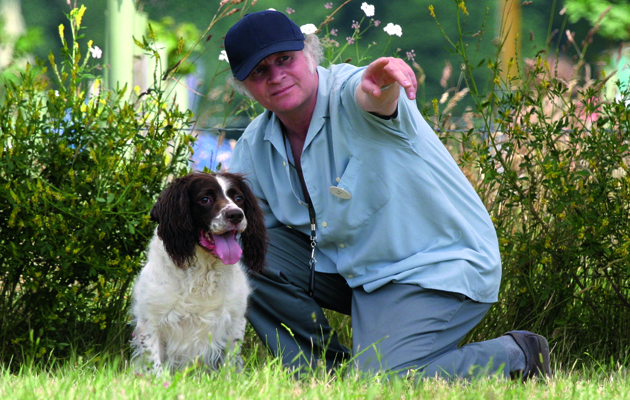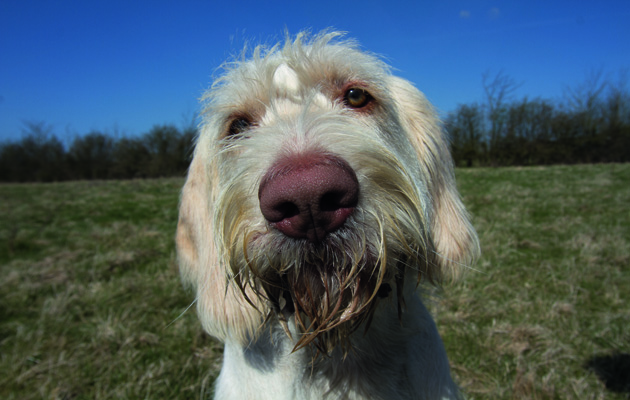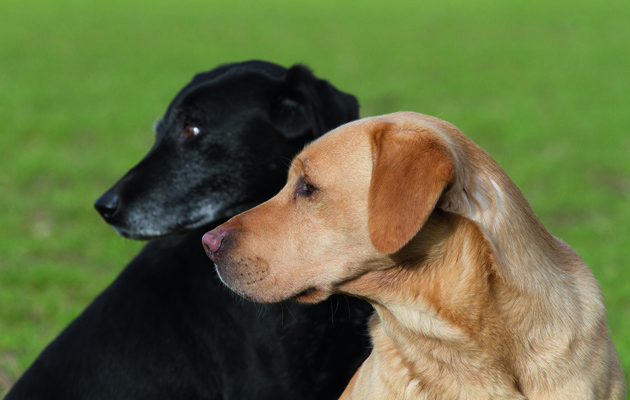Win CENS ProFlex DX5 earplugs worth £1,149 – enter here
Can dogs read body language?

Body language is also key for communication, not only person-to-person and dog-to-dog, but across species as well. People have learned to ignore body language and posture. How many times have you asked a friend if they’re okay and they fold their arms, purse their lips and say “yes, I’m fine.” Although it’s obvious that they’re not, polite society dictates that we don’t push and instead we take what they’ve said at face value.
Not so in the animal kingdom. If a dog is unhappy then every other dog knows about it and responds accordingly by avoiding the dog like the plague for fear of being reprimanded.
This is one of the many reasons why dogs are so endearing and seem to know what we’re thinking and feeling; they’re reading our body language, which is in turn shouting at them and telling them what we feel. Due to their amazing noses smelling changes in our mood and their acute observation skills, dogs really can read us like a book.

With amazing noses smelling our mood changes and acute observation skills, dogs can read us like a book.
Body posture
An easy way to understand the silent signals passed among a pack of dogs when they’re hunting is to think of soldiers on manoeuvres. There is lots of gesturing with hands, arms, gaze, body posture and weight distribution. Dogs also communicate with gaze, posture and weight distribution.
Their bodies like arrows, they have all their focus on their prey, either on their own or as a pack, with their gaze will be boring into the animal that they are marking. When they’re ready to go in for the kill, their weight will move from being centered over their paws, or slightly back, during the stalk, to forward and into full attack mode.
Most of us already use body posture as part of our gundog training. Think of the hand signals we use when telling our dogs to get out and go back. A lot of us, however, tend to rush through this invaluable part of training and end up with dogs that are a bit hit and miss at following the signals we give them. This could be because we inadvertently give mixed messages to the dogs — maybe body language contradicts the arm movement (the point) or the gaze.
To the point
Dogs are the only animals on the planet that will follow the point and it’s believed that this communication skill, along with the bark, was developed as part of domestication. Dogs have learned that good things are generally at the other end of an outstretched arm, for example their food bowl and the great outdoors, as we instruct them to go through doorways.
They also follow our gaze, as they would other dogs and try to communicate with us using the gaze. Whenever I take my dogs to the vet, the first thing they do is sit and look at the treat jar in the corner, telling the vet in no uncertain terms what it is they want.
When you watch inexperienced dogs out on a shoot, they start off by watching the Guns and the birds on the ground as well as the other dogs with a bit of wide-eyed wonder. As they settle down, they quickly learn to follow the gaze of the more experienced dogs, stop being so focused on the Guns on the field and tend to watch the sky more. They are learning, through watching and following the gaze of another, when they can take their eyes off the bird in the sky and when they need to follow through and mark the pricked bird. Although they can learn this for themselves, it’s a long process, which is greatly hastened when they have an experienced gaze to follow.
The eyes have it
I decided to incorporate the gaze into my training techniques after I undertook an experiment to discover whether dogs followed the gaze over the learned behaviour of following the point command.
Sitting the dogs one at a time on a mark between two tennis balls, the owners sent their dog for the indicated ball either using the head turn (gaze) combined with ‘get out’, the point combined with ‘get out’ or, and this was the decider for me, turning their head in one direction and pointing in the other, also combined with ‘get out’.
What astounded us all on the field was that even though these dogs were well trained in the left and right commands, they not only followed the gaze equally well when given on its own, but an equal number of dogs ignored the hand signal in favour of following the gaze.
It really highlighted to me that we need to change the way we use our bodies, weight distribution and, more importantly, our gaze, when training our dogs; not only for when they’re working at distance from us, but also when they are working at our sides.
Next time, we’ll look at the practicalities of using the gaze and body language for training the ‘get on’, the ‘get out’ and the ‘go back’ commands and how, by incorporating ‘canine communication’, we can give our dogs a heads up as to what we want them to do next.
Related Articles
Get the latest news delivered direct to your door
Subscribe to Shooting Times & Country
Discover the ultimate companion for field sports enthusiasts with Shooting Times & Country Magazine, the UK’s leading weekly publication that has been at the forefront of shooting culture since 1882. Subscribers gain access to expert tips, comprehensive gear reviews, seasonal advice and a vibrant community of like-minded shooters.
Save on shop price when you subscribe with weekly issues featuring in-depth articles on gundog training, exclusive member offers and access to the digital back issue library. A Shooting Times & Country subscription is more than a magazine, don’t just read about the countryside; immerse yourself in its most authoritative and engaging publication.








